It's a beautiful morning and life is good.
A male leafcutter bee (genus Megachile) drops down on a spent flower in a Vacaville pollinator garden.
He's warming his flight muscles, ready to greet the day--and maybe a female of his species.
Mr. Leafcutter Bee does not see the long-legged, long-beaked predator stalking him. The predator, a ringed assassin bug, Pselliopus cinctus, is hungry.
A bee breakfast would be good. Mr. Assassin Bug's menu over the last week probably included aphids, a leafhopper, a a lacewing and maybe a lygus bug or caterpillar. And now, maybe, a bee? He's focused on ambushing and stabbing the unsuspecting bee, injecting his venom and sucking out the body contents. That's what assassin bugs do, and he's an assassin bug. He's one of some 7000 species of assassin bugs found throughout the world.
Assassin bugs (Reduviidae) “are one of the largest and morphologically most diverse groups of Heteroptera, or true bugs,” according to a UC Riverside site, Heteropteran Systematics Lab.
The predator-prey drama lasts for about a minute. Abruptly, the bee spots danger and buzzes off.
It was a good morning for the leafcutter bee and a bad morning for the assassin bug. But the day isn't over…
Attached Images:
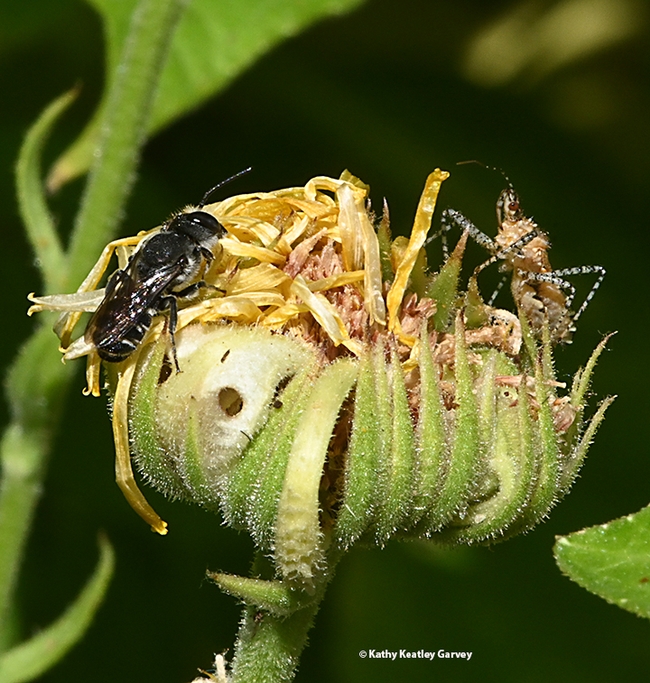
A male leafcutter bee lands on a spent flower. He is not alone. (Photo by Kathy Keatley Garvey)
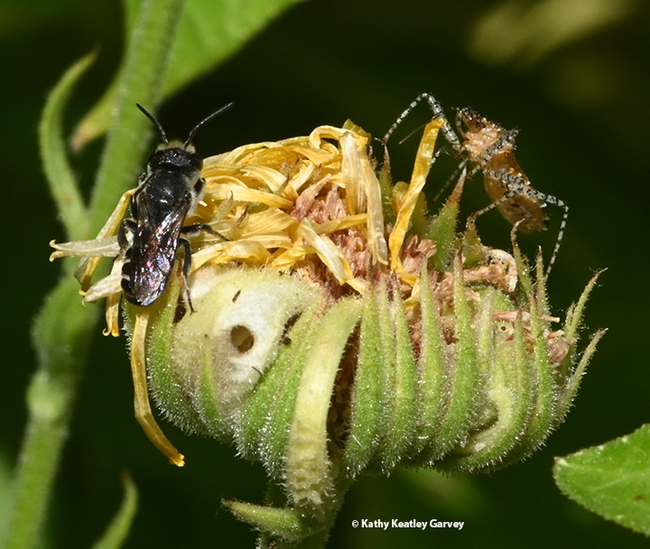
The male leafcutter bee does not see the beaked, long-legged assassin bug stalking him. (Photo by Kathy Keatley Garvey)
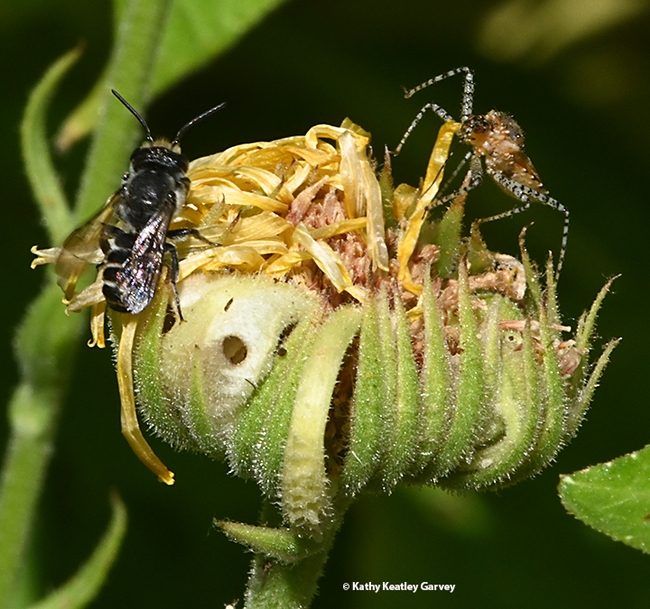
The bee spots danger, and in a second buzzes off. (Photo by Kathy Keatley Garvey)
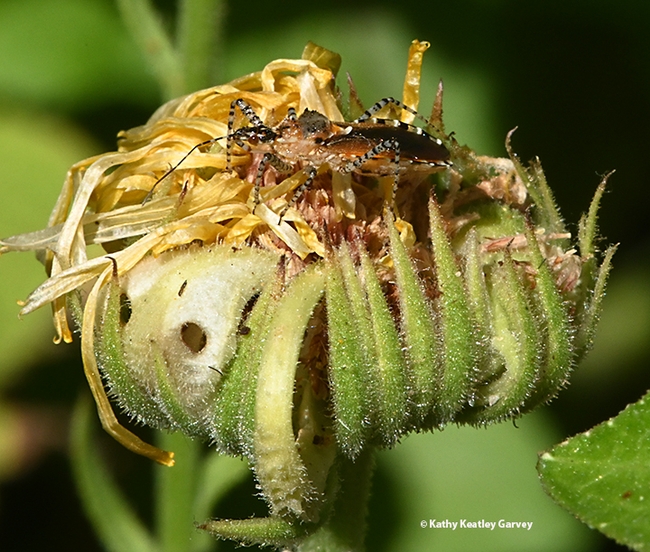
The predator wonders where his prey went. (Photo by Kathy Keatley Garvey)
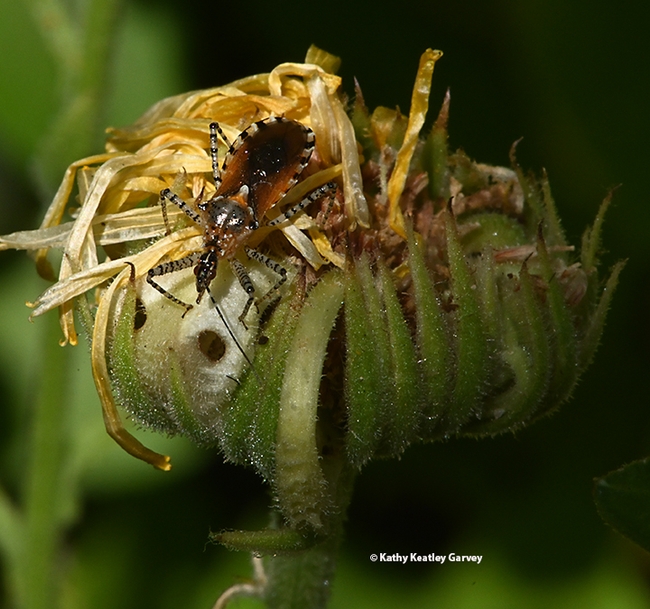
The assassin bug looks everywhere but no meal in sight. (Photo by Kathy Keatley Garvey)